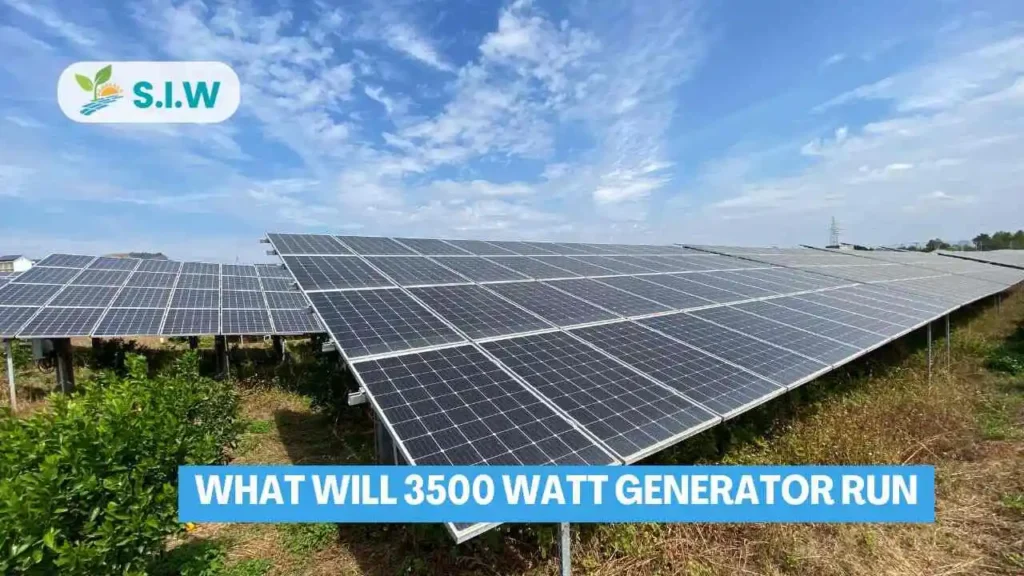Generators are essential devices that provide power in situations where the electrical grid is unavailable or unreliable. They are used in various applications, from powering homes during outages to running tools and appliances on job sites.
Importance of Understanding Power Needs
Understanding the power requirements of your devices and appliances is crucial for selecting the right generator. A 3500-watt generator is a popular choice for many due to its balance between power output and portability. This article explores what a 3500-watt generator can power, helping you make informed decisions based on your needs.
Understanding Generator Ratings
A generator’s wattage rating indicates its maximum power output. A 3500-watt generator can provide 3500 watts of power, which is adequate for many household and recreational uses. However, it’s important to understand both the running wattage and the surge wattage, as some devices require additional power to start.
Generators come in various sizes, from small portable units to large standby systems. A 3500-watt generator is considered mid-sized, offering more solar batteries than small units but less than large, whole-house generators. This balance makes it a versatile option for many users.
Common Appliances and Their Wattage
To determine what a 3500-watt generator can run, it’s useful to know the wattage of common household appliances:
- Refrigerator: 150-800 watts
- Microwave: 600-1200 watts
- Television: 100-400 watts
- Laptop: 50-150 watts
How Many Appliances Can 3500 Watts Run?
A 3500-watt generator can typically handle several appliances simultaneously. For example, you could run a refrigerator, a few lights, and a television at the same time, depending on their combined wattage. It’s important to calculate the total wattage of all devices to avoid overloading the generator.
Essential Home Systems
Refrigerators and Freezers: Refrigerators and freezers are critical during power outages. A 3500-watt generator can usually handle one or two of these appliances, ensuring that your food stays cold.
HVAC Systems: Heating and cooling systems require significant power. While a 3500-watt generator may not run a central HVAC system, it can power a window unit or a few fans, depending on their wattage.
Generator Maintenance and Care
To ensure the longevity and efficiency of your 3500-watt generator, regular maintenance is crucial. This includes checking and changing the oil, replacing air filters, and inspecting spark plugs. Follow the manufacturer’s maintenance schedule to keep your generator in top condition.
Generators can encounter issues such as difficulty starting, uneven power output, or excessive noise. Common troubleshooting steps include checking fuel levels, inspecting the battery, and ensuring there are no blockages in the air intake. For persistent issues, consulting the user manual or a professional technician may be necessary.
Comparing with Other Generators
A 2000-watt generator is typically suitable for powering fewer appliances or devices. In contrast, a 3500-watt generator offers more flexibility and can handle more power-hungry equipment. Choosing between these sizes depends on your specific power needs and usage scenarios.
For larger power needs, a 5000-watt generator provides more capacity. It can run larger appliances and more devices simultaneously. However, it also comes with increased weight and cost. Assess your power requirements to determine if the extra capacity is necessary.
Generator Portability and Storage
Portability is a key feature of many 3500-watt generators. Look for models with wheels and handles for easy transport. This feature is especially useful for outdoor activities and job sites where mobility is important.
When not in use, store your generator in a dry, well-ventilated area to prevent damage. Ensure it is turned off and cool before storing. Regularly clean the unit and check for any signs of wear or damage to maintain its condition.
Cost and Investment Considerations
The initial cost of a 3500-watt generator varies by brand and features. While a higher upfront investment might seem significant, consider the long-term value in terms of reliability, efficiency, and the convenience it provides. Factor in potential repair and maintenance costs as part of your investment assessment.
Operating solar power systems for home include fuel, maintenance, and potential repairs. Evaluate fuel efficiency and the availability of fuel types in your area to manage operating expenses effectively. Regular maintenance helps prevent costly repairs and extends the generator’s lifespan.
Customer Reviews and Ratings
Customer reviews provide valuable insights into the performance and reliability of different generator models. Look for reviews that mention the generator’s ease of use, durability, and customer service experiences. This information can help you make an informed decision based on real-world usage.
Popular brands for 3500-watt generators include Honda, Generac, and Champion. Research specific models within these brands to compare features, performance, and user reviews. Each brand may offer unique advantages, such as advanced technology or enhanced fuel efficiency.
Frequently Asked Questions (FAQs)
What appliances can I run with a 3500-watt generator?
A 3500-watt generator can typically run essential appliances such as a refrigerator, a few lights, and a television. It can also power smaller tools and equipment. Always check the wattage of each appliance and add them up to ensure they do not exceed the generator’s capacity.
How long can a 3500-watt generator run on a full tank?
The runtime of a 3500-watt generator depends on the fuel type and load. On average, a gasoline-powered 3500-watt generator can run for 8-12 hours at half load. Propane models may offer different runtimes, so refer to the manufacturer’s specifications for exact figures.








